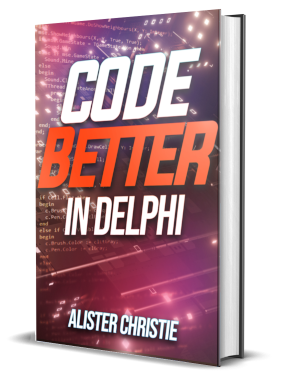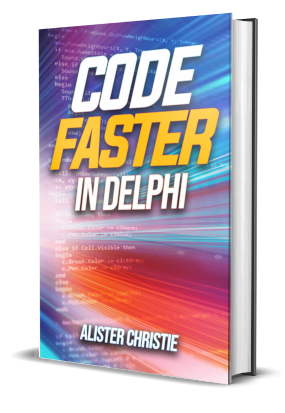The fastest way to get started in Delphi
Delphi is a powerful tool for building applications. In this comprehensive course series, we'll focus on mastering the Visual Component Library (VCL) to create robust Windows applications. This in-depth training will take you from the basics of "Hello, World!" to expert-level skills, covering 20 essential visual controls and their properties, events, and methods.
Course Highlights:
- Ground-up Application Building: We'll start with a clean slate, exploring how to build applications from scratch, including the most common visual controls such as labels, edits, buttons, and more.
- In-depth VCL Control Mastery: Learn to utilize 20 essential VCL controls, examining their properties, events, and methods in great detail. This will give you a solid foundation for building complex user interfaces.
- Responsive UI Design: Discover how to create responsive designs that adapt to changes in size, shape, and state, ensuring your application remains intuitive and user-friendly.
- Actions: Simplifying Your Code: Learn the power of actions, which allow you to keep your application's state consistent and updated with minimal code (sometimes even no code at all).
Who Should Take This Course:
- New to Delphi? Get up-to-speed on building Windows user interfaces quickly and efficiently.
- Are you familiar with Delphi? Dive deeper into the VCL to take your skills to the next level.
- Even experienced developers will find valuable tips and insights in this comprehensive course.
What You Won't Learn in This Course:
- Cross-platform application development (our focus is on Windows only, 32/64 bit).
- Programming fundamentals in the Delphi language (although there will be some examples).
By the end of this course series, you'll have a thorough understanding of VCL application development and be well-equipped to build robust, user-friendly applications for Windows.
Periodic Table Project: Building a Complete Application with VCL and Delphi
In this exciting project, we'll apply the skills and knowledge gained from this VCL development course to create a complete application that showcases the periodic table of elements. This engaging project will help you consolidate your understanding of visual controls, event handling, and responsive design principles.
Course Objectives:
-
Design and implement a visually appealing user interface for the periodic table application.
-
Utilize the TStringGrid control to create an intuitive and interactive experience.
-
Create a custom installer using Inno Setup to distribute your application with ease.
Key Skills Reinforced:
-
In-depth understanding of VCL controls and their properties, events, and methods.
-
Experience with event handling to simplify code and enhance application functionality.
-
Knowledge of Delphi's built-in tools for creating custom installers.
What You'll Gain:
-
An understanding of VCL development principles and best practices.
-
Practical experience in building a real-world application that showcases the periodic table.
-
The ability to distribute your application easily using a custom installer.
There are two example CSV files we use in building the periodic table example. They are a list of elements and their properties, and the periodic table layout
Alister’s videos are truly the fastest way to get started in Delphi. I would definitely recommend anyone starting out to buy them. The videos are really easy to follow and interesting – beats reading tedious technical books any day. I especially like working through a real application including a section on using an installer to deploy.
The LearnDelphi.tv site is also a great resource with lots of brilliant free videos and information.
I can’t wait for the next series. Awesome work Alister!
Chris
See Table of Contents by clicking 'Read more' below.
Get Building Applications using VLC Part 1 now


